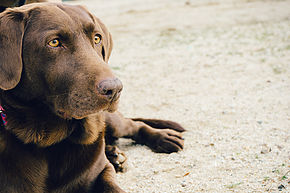It takes about 1-2 teaspoons of urine to run a urinalysis. Even obtaining that small amount may seem like a monumental task for some owners. To aid in this adventure, we have put together some suggestions to help make this process easier for you. Please feel free to contact us at any point with questions.
- Keep your dog on a leash while trying to obtain a sample. You may want to enlist help to catch the sample.
- If you dog squats very low to the ground, we recommend sliding a saucer, plate, or other shallow dish under your dog when they are ready to urinate (It is important to make sure the collection device is clean and dry). Once collected, transfer the urine to a sterile container for transporting.
- If your dog lifts his/her leg or squats high, you can use a “dipper” to catch the urine. A “dipper” can be made by taping a small disposable papercup to a handle (stick, dowel rod, ruler, etc.). This allows you to collect urine without reaching under your dog with your hand. A soup ladle works well! This method is effective for dogs that maybe shy to you reaching under them.
- If your dog is uncooroperative in any of these methods, please contact us. We can help. We can set up an appointment for a staff member to collect urine with you outside, or we can collect urine by cystocentesis. Cystocentesis is done by passing a needle into the bladder and obtaining a sample directly. Although this sounds unpleasant, it is surprising how well dogs tolerate the procedure. It is important to keep your dog away from their yard and grass for at least two hours prior to this appointment. When you arrive at the hospital for your appointment, please do not let them sniff around outside, but come directly inside from your vehicle.
After obtaining the sample, it is extremely important to get the sample to us in a reasonable amount of time. For best results, this sample should be processed within 2 hours after collection. If that is now possible, the sample should be refrigerated and tested within 6 hrs.

